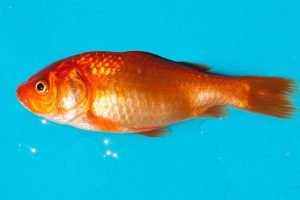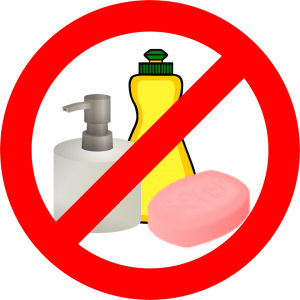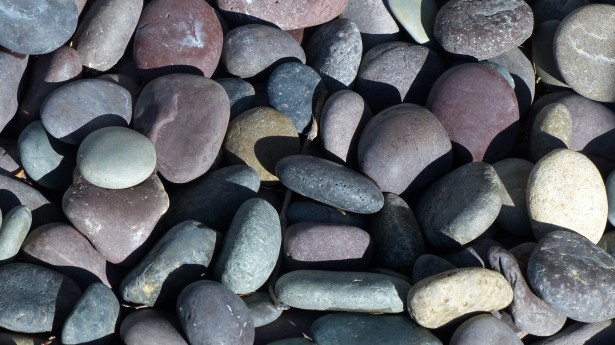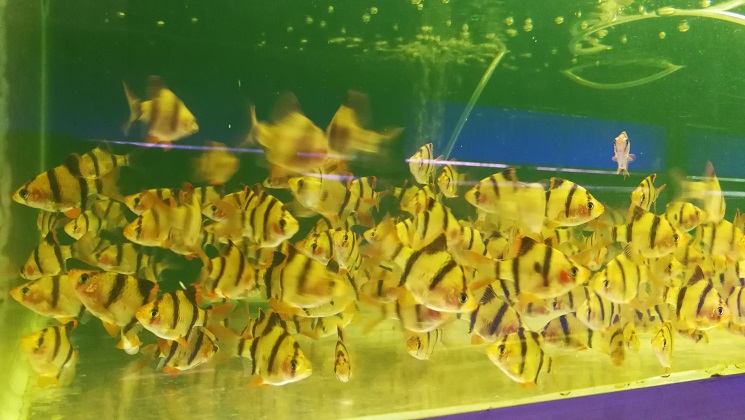It is so sad and frustrating when you see your goldfish getting sick and dying in spite of all that you have done, and the money you have spent on your goldfish keeping hobby.
“Why?? Why do my goldfish keep dying??!!!“. These are questions that we as new or experienced goldfish keepers often ask ourselves.
Let’s take a look at why this is happening and what can we do about it.

The first rule of fish keeping…
Before we get too discouraged, let me share with you this first rule of fish keeping. This is something that a fish keeping guru told me when I first started out many many years ago.
The first rule of fish keeping is… “Fish die“.
Yes, it is as simple as that. It sounded a bit heartless isn’t it?… as if it is okay for your fish to die.

However, when I look at it deeper, it is really meant to remind us that fishes are living beings and are susceptible to death. So as fish keepers, like it or not we will encounter this in the hobby. It is our duty then to learn, understand and do better in keeping them alive; and providing them with proper care.
Why do my goldfish keep dying?
The answer is… STRESS!
Yes, you heard me right. Just like us, goldfish do get stressed out as well, although for different reasons. Stress causes their immune system to weaken and exposes them to infections from pathogens and parasites which otherwise do not manifest themselves. These infections when left untreated can be fatal.
What are the signs of stress?
Look out for the following behaviors in your goldfish. These are signs that they are stressed out:
- Consistently gasping for air at the surface
- Clamped fins
- Lethargic
- Not eating
- Hiding behind plants, rocks, driftwood or tank decorations
- Abnormal swimming patterns such as the goldfish are in swimming motion but remain stationary, or darting around in the tank.

If you do not take action, the pathogens and parasites in the water will quickly attack its weakened immune system and cause diseases such as ick, fin rot, dropsy, skin lesions, fungal infection and pop eye, to name a few.
What are the causes and what can I do?
There are 5 main causes for goldfish stress. They are:
1. Poor Water Quality
- Chlorine & dissolved chemicals in tap water
Tap water contains chlorine and other dissolved chemicals that are harmful to goldfish.
What can be done?
If you are using tap water for your goldfish tank, remember to always add water conditioner such as Seachem Prime to remove them.
- Ammonia and Nitrite
If you have not heard about Nitrogen Cycle before, it is very important for you to click here and read about it.
In my opinion, Ammonia and Nitrite are the Number One cause of goldfish stress and deaths. They are produced from organic wastes such as fish poop, uneaten food and decaying matter in the tank. Only when the beneficial nitrifying bacteria colonies are established that these compounds are converted into non-toxic.

What can be done?
a) Always, always, always cycle your tank before putting your goldfish in.
b) You must have a good filter for your goldfish tank. MUST!
c) Test your fish tank water regularly. Use a good test kit like the API Freshwater Test Kit.
d) You can use more effective filtration media such as Seachem Purigen with your filter.
e) Do not overfeed your goldfish. Remove any uneaten food after 3 minutes of feeding.
f) Do frequent water changes.
2. Cramped Space
Goldfish have the potential to grow big. The flat bodied ones can grow over 12” in length while the round bodied ones can go slightly smaller than that. Besides that, goldfish are sloppy eaters and they create a lot of wastes that affect the water quality. In a smaller tank, the water quality will deteriorate much quicker.
Due to these reasons, they should be kept in tanks that provide big enough space for them. The recommendation is 20 gallons of water for the first goldfish and subsequent ones will need 10 gallons each, although the flat bodied ones are more suited in ponds.

Although this recommendation can be stretched a little bit with workarounds, I think it should not be smaller than 20 gallons for 1 or 2 juvenile goldfish with the intention to upgrade the tank as they grow.
Fish bowl is definitely a NO NO!
What can be done?
a) Get a tank big enough for the numbers of goldfish that you have or move some to a new tank or container.
b) Do more frequent water changes.
c) Stop buying goldfish on impulse!
3. Change of temperature
Although more of a coldwater fish, goldfish can handle a big range of temperature. I am keeping them in my tropical climate that ranges from 25-30°C (77-86°F). As the temperature here does not fluctuate too much, there is less for us to worry about. Even so, whenever you get a new goldfish, you should acclimate it to the tank’s water temperature before putting it in.
However, if you are living in a country which have different seasons, the big temperature changes may shock your goldfish, stressing them out.
What can be done?
a) Get an aquarium heater to regulate the fish tank’s water temperature when it gets too cold.
b) When you buy a new goldfish, float the bag that it comes with in the tank for at least 15 minutes to acclimate it to the tank’s water temperature.
4. External chemicals & Pathogens
Poisonous external chemicals can be introduced into your goldfish tank accidentally when doing maintenance or adding new things to the tank. For examples:

- Residue from household detergents used to clean your tank equipment contain chemicals that are toxic for the goldfish.
- Objects that we put into our fish tank as decorations may contain paints that leech poison when submerged into water.
- Using substrates, rocks or plants that are found outside may contain pathogens and parasites.
Besides that, whenever we get a new goldfish, we can’t wait to put it into the fish tank so that it can join the gang. This is very risky because if the new goldfish is sick, the pathogen or parasite will get introduced to the rest of the gang.
What can be done?
a) Never never wash fish tank equipment that goes into the tank with any household detergent. Just rinse them with water. Rinse your hands thoroughly too if you are going to dip them into your fish tank water.
b) Use only decorations meant for fish tanks. Boil or soak them in hot water to kill off any pathogens and parasites.
c) Get rocks that are meant for aquatic use. River rocks or rocks used for ponds are usually fine. Boil the rocks or soak them in hot water. Same goes to substrates too.

d) When buying aquatic plants from fish stores, it is best to wash them thoroughly and quarantine them for a day or two.
e) When you bring a new fish home, always quarantine it in a separate tank for at least 2 weeks and monitor for signs of sickness. Quarantine tank or container should be big enough and have a filter running.
5. Tank Mates Incompatibility
Bullies exist in goldfish world too. If you are keeping goldfish with other incompatible fishes, goldfish may get nipped or chased around a lot. This definitely creates a lot of stress for them.

I personally prefer keeping goldfish only tanks. There are goldfish bullies too, don’t get me wrong… but in general, they are all very peaceful and will go about minding their own business.
What can be done?
If you do notice bullying is happening in your fish tank, you can try these few methods:
- Rearrange the rocks, driftwoods or decorations in the tank. Territorial fishes mark their territories through the objects in the tank.
- Move the bully or the victim to a new tank.
- Put up a divider in the tank to separate the bully and the victim.
That is why if you are setting up a community tank, it is important to research the compatibility among all the fishes that you intend for the tank. Don’t buy on impulse.
Getting to the root of the problem
Next time when you ask the question “Why do my goldfish keep dying?”, you already know the answer. It all boils down to one word – “STRESS”. Not so different from us people, right?
So to reduce stress for your goldfish, take good care of their tank’s water quality, give them enough space, watch out for temperature changes, be cautious on introducing anything new, and keep the bullies away. Not that you can ask them to take up Yoga. 🙂
Let me know if I have missed out anything. Are there any other causes for fish stress? Please leave your thoughts in the comment section below.

We used to keep goldfish for years. Sometimes we were successful at keeping them for long periods of time..years..and others weeks. I wish I had all your great information in one spot back then. I never thought to quarantine my fish for two weeks before introducing them to others in the tank nor thought that those decorations for sale could actually be harmful! Will bookmark for future reference.
Hi Linda,
Thanks for the comment. Putting the new fish in quarantine is very important especially when you already have other fishes in the tank. It only takes one sick fish to potentially infect the others. So better be safe than sorry. 🙂
There’s quite much to do if you want to keep your fishes happy and alive. I need to come back read these post again if I ever take a goldfish.
Hi Jan,
Yeah… fish keeping is not merely about buying a tank, filling it up with water and put the fish in. It is about doing the necessary for keeping them alive and giving them proper care. Thanks for dropping by!
This was a great read. I never thought that goldfish had the ability to get stressed but after reading this article it’s easy to see how it can happen. Of course no one wants their fish to die but preparing yourself for it and taking the preventive measures will always put you in the best position to keep you fish friends alive!
That’s so true Justin. If we decide to keep them, any pets for the matter, we need to take the responsibility to give them proper love & care. Thanks for your comment!
Hi Alex, thanks again for another great article. I’ve always had difficulty keeping my fish alive no matter what kind I get. I think you’re right that justlike anything else fish will die on you. While your main points above are duly noted…I remember in one of your other articles the size of the tank seems to be pretty important as well. Could keeping a fish in a tank smaller than recommended be responsible for killing fish? I was always taught ‘they grow to their environment.’ but not sure how true that is…
Hi Craig,
Good catch there. Yes, tank size is important as well and I have added that section to my post. Keeping them in too small places does create a lot of stress to the fish as well. I don’t necessarily buy the “they grow to their environment” part. I think in most cases, the fish died due to complications from the stress before they have a chance to grow to their cramped environment.
Thank you for this helpful information. Fish are living beings and it is important for us to take the natural steps in learning how to care for them properly. You list excellent ways to make this possible and every fish-owner should take a look at this!
Thanks Rob for your comment.
Alex, SO many wonderful articles by you but none more resembles my issue more than this one. I have loss so many beautiful fancy tails and from what I am reading here doing everything you have mentioned. I have done QT tanks for my new additions with prevention meds (paraguard or cupramine not together), with just aquarium salt, and nothing added at all but always seem to lose them (never buy more than 4 at a time) after the first 7-10 days. OT tank has been cycled and I do daily checks of the water parameters keeping a log. 1/3 water change every week. Most recent purchase of 4, two died (one parasite saw clear poop and the other unknown) after being QT in a separate third tank a week apart. Going to keep trying by trial and error but at $75 a pop is ouchie on the pocket book. Where I’m buying from is a very reputable establishment… Yes, fish die, but I’m doing something wrong… Any other thoughts???
Again LOVE your articles…
I am so sorry to hear about your situation, and I definitely could relate to that. The feeling is like.. I have done all the correct things at least from what I have researched, but why is my fish still dying on me. I have the same feeling in the past and even in the present. In spite of our best efforts, there are still some conditions that are rather difficult to know and handle as in where & the conditions that the fish come from. This is how I would approach it:
1) If I have been seeing my fish having internal parasites and they all seemed to come from a certain shop/breeder, I will take that as a sign to look for another shop/breeder.
2) I will refrain from getting too many new fish in one go. Hmm…perhaps 1 or 2, depending on the size of my QT.
3) I will check on whether there is any problem with my water source. Have all my fish died with the same period of time when being introduced to the tank? Maybe try out RO water and see whether there is a difference.
4) When using any medication, be careful with the dosage. I usually use a dosage slightly lower than what’s mentioned in the labels.
These are a few of my thoughts. Hope they help and all the best in your fishkeeping!